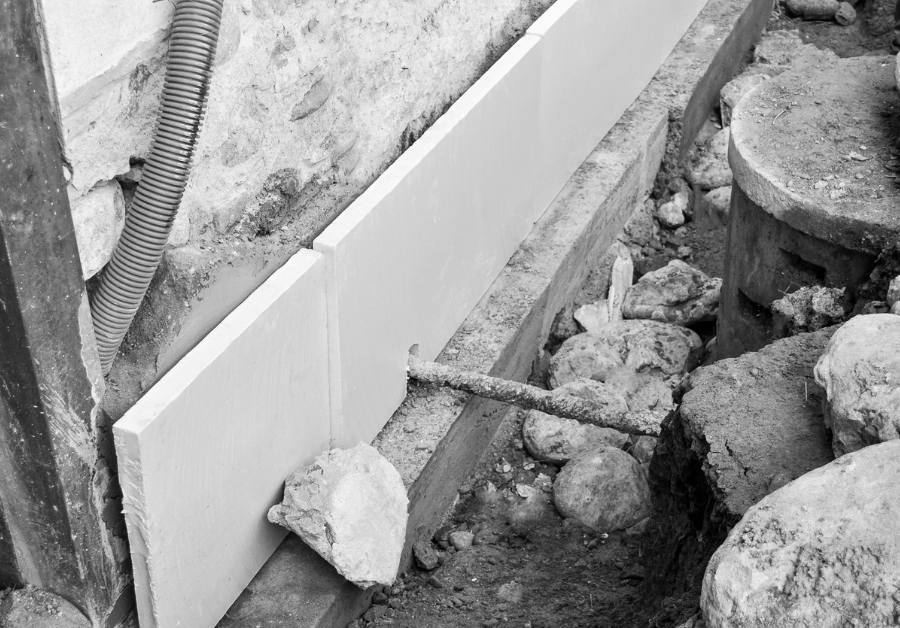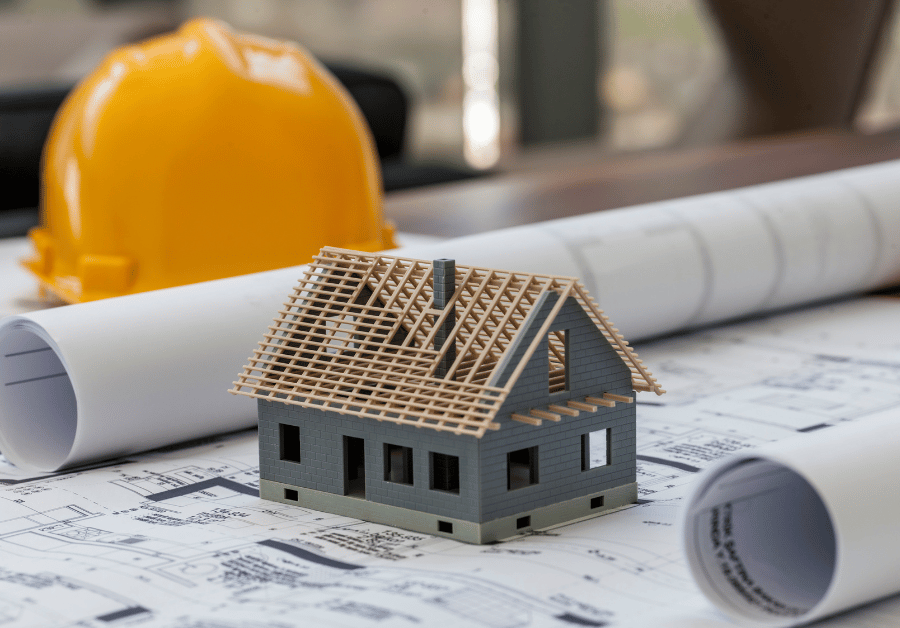House Underpinning Near Me: Your Comprehensive Guide to Foundation Repair in Australia
Are you noticing unsettling cracks in your walls, doors and windows sticking, or perhaps uneven floors in your beloved Australian home? These aren't just minor blemishes; they could be critical signs that your home's foundation is shifting, a common issue known as subsidence. When your house's structural integrity is at risk, you're likely searching for "house underpinning near me" – a vital service that provides the necessary support to stabilise your property.
In Australia's diverse landscape, from the expansive clay soils of Sydney and Melbourne to the reactive grounds of Adelaide, Perth, Brisbane, and Hobart, foundation issues are a reality for many homeowners. This comprehensive guide will delve deep into everything you need to know about house underpinning, helping you understand the problem, explore solutions, and connect with trusted underpinning experts right in your local area. Our goal is to provide you with unparalleled value, detail, and actionable insights, ensuring you have the peace of mind that comes with a stable home.
Understanding House Underpinning: Why It's Crucial for Australian Homes
At its core, underpinning a house is the process of strengthening and stabilising an existing foundation. It's typically required when the original foundation is no longer capable of supporting the structure above it, often due to changes in the underlying soil or environmental factors. Think of it as giving your home a much-needed, deep-rooted support system.
Common Causes of Foundation Issues in Australia:
- Reactive Soils: Large parts of Australia, particularly regions around Adelaide and Melbourne, are known for their highly reactive clay soils. These soils expand when wet and shrink when dry, causing significant ground movement that can lead to structural damage and necessitate foundation repair.
- Poor Drainage: Excessive moisture around the foundation, often from poor stormwater drainage, leaky pipes, or even consistent water pooling, can saturate the soil, reducing its bearing capacity and leading to subsidence.
- Tree Roots: Large trees too close to the house can absorb significant amounts of moisture from the soil, causing it to dry out and shrink, leading to differential settlement.
- New Construction or Excavation Nearby: If soil near your home is excavated for a new swimming pool, an extension, or the knock-down rebuild of a home next door, it can destabilise your property's foundation.
- Drought and Flooding Cycles: Australia's climate extremes, with periods of prolonged drought followed by heavy rains, exacerbate soil movement, making homes vulnerable to foundation issues.
- Inadequate Original Foundation: Sometimes, the initial foundation may not have been designed or constructed adequately for the specific soil conditions.
Spotting the Signs: Do You Need Underpinning?
Recognising the early warning signs of foundation problems can save you significant time, money, and stress. If you're searching for "house underpinning near me", you're likely already seeing some of these tell-tale indicators:
Key Indicators of Foundation Problems:
- Cracks in Walls: Diagonal cracks in the walls, particularly above windows and doors, or stair-stepping cracks in brickwork, are strong indicators of structural movement. Vertical cracks are often less serious, but horizontal cracks can be very concerning.
- Uneven or Sinking Floors: If your floors feel spongy, are visibly sloped, or you notice sinking floors in certain areas, it suggests differential settlement.
- Sticking Doors and Windows: Doors and windows that suddenly become difficult to open or close, or no longer fit properly in their frames, indicate the house frame is shifting.
- Gaps Around Window and Door Frames: Visible gaps between the frame and the wall often point to movement.
- Bowing or Leaning Walls: Walls that are visibly no longer straight or plumb are a serious sign of structural damage.
- Separating Chimneys: If your chimney appears to be pulling away from the rest of the house, it's a clear sign of foundation distress.
- Wet Basements or Crawl Spaces: Consistent water ingress can weaken the soil beneath your foundation.
If you observe any of these signs, it's crucial to act promptly. Delaying action can lead to more severe structural damage and significantly higher repair costs down the line. It's time to request a quote from underpinning specialists.
Exploring Underpinning Solutions: Types of Underpinning in Australia
The Australian market offers several effective underpinning solutions, each suited to different soil conditions, foundation types, and budgets. When you contact underpinning experts, they will assess your specific situation to recommend the most appropriate method.
1. Traditional Mass Concrete Underpinning:
This is the oldest and most well-known method. It involves excavating sections of the foundation in a sequence, pouring concrete into the excavated areas to create new, deeper footings. This extends the foundation down to more stable ground. It's a robust solution, often used for significant subsidence repair, but can be more disruptive and time-consuming.
2. Resin Injection Underpinning (Chemical Underpinning):
Also known as geo-polymer injection, this modern technique, championed by companies like Mainmark and Rectify Group, involves injecting a high-density, expansive geo-polymer resin into the ground beneath the foundation. The resin expands and compacts the soil, filling voids and lifting the slab or foundation back to its original level. This method is often preferred for its speed, minimal disruption, and cleanliness.
- Benefits: Fast, non-invasive, no excavation required, cost-effective for certain applications, effective for void filling and ground improvement.
- Applications: Ideal for slab lifting, level correction, stabilising foundations affected by reactive soils, and addressing uneven floors.
3. Piling (Mini Piling & Screw Piling):
For very deep or unstable soils, piling may be necessary. Mini piles are small-diameter piles drilled into the ground and reinforced with steel and concrete, transferring the load to deeper, more stable strata. Screw piles are helical steel piles screwed into the ground. These methods are typically used for heavy loads or severe structural damage.
4. Concrete Underpinning / Slab Lifting:
While often used interchangeably with resin injection for slab lifting, concrete underpinning can also refer to techniques specifically designed to re-level concrete slabs using hydraulic jacks and grout. This addresses issues like sinking floors or cracked slabs without necessarily extending the entire foundation depth.
5. Ground Improvement Techniques:
Beyond direct underpinning, experts may employ various ground improvement strategies, such as dynamic compaction or vibro-compaction, to densify loose soils. Hydro vacuum excavation can also be used to safely and precisely remove soil for inspections or before more traditional underpinning work begins, minimising disruption to services.
The Cost of Underpinning a House: What to Expect in Australia
One of the first questions homeowners ask when facing foundation issues is, "What is the cost of underpinning a house?" It's important to understand that there's no one-size-fits-all answer. The underpinning cost varies significantly based on several factors, as highlighted by various Adelaide underpinning specialists.
Factors Influencing Underpinning Cost:
- Severity of Damage: Minor settlement requiring just a few piers will be far less expensive than extensive structural damage across multiple walls.
- Method of Underpinning: Resin injection can sometimes be more cost-effective for specific applications compared to traditional methods that involve extensive excavation.
- Accessibility: If the work area is difficult to access (e.g., tight spaces, mature gardens, or internal work), it can increase labour and equipment costs.
- Soil Conditions: The type of soil and its depth to stable ground will dictate the depth and number of underpinning points required.
- Size of the Area to be Underpinned: Whether it's a single corner, one wall, or the entire perimeter of the house will significantly impact the total cost.
- Location: While we're discussing "house underpinning near me" across Australia, costs can vary slightly between major cities like Sydney, Melbourne, Perth, Brisbane, Adelaide, and Hobart due to local labour rates and material availability.
- Associated Repairs: Often, underpinning projects also require crack repairs, wall crack repairs, concrete repairs, and internal finishing work, which add to the overall expense.
Based on industry insights and common ranges cited by underpinning specialists in South Australia and beyond, a typical residential underpinning job cost can range anywhere from $4,000 to $15,000 for smaller projects, but can easily escalate to $30,000 or even $50,000+ for more extensive or complex work. This range often includes the initial assessment, the underpinning work itself, and basic make-good. For a precise figure, you'll always need underpinning specialists to provide a tailored free quote after an on-site assessment.
Choosing the Right Underpinning Experts "Near Me"

When your home's foundation is at stake, selecting the right professionals is paramount. You need experienced, licensed, and reputable underpinning contractors who understand the unique challenges of Australian soil and building practices.
Key Considerations When Selecting Underpinning Specialists:
- Licensing and Insurance: Ensure the company and their tradesmen are fully licensed and hold appropriate insurance (public liability, professional indemnity) for structural underpinning work in your state (e.g., South Australia, NSW, VIC, WA, QLD, TAS).
- Experience and Track Record: Look for companies with a proven history of successful residential projects and positive client testimonials. Companies with decades of experience, like those often recognised at business excellence awards, are a good sign.
- Specialisation: Do they specialise in foundation repair and underpinning? Some companies offer a broad range of building services, but true underpinning experts will have dedicated teams and equipment.
- Comprehensive Assessment: A reputable professional will conduct a thorough site inspection, often involving a structural engineer, to accurately diagnose the problem and recommend the most suitable solution. They won't just offer a quick fix.
- Detailed Quotes: Expect a clear, itemised free quote that outlines the scope of work, chosen method, timeline, and all associated costs. Don't hesitate to request a quote from several providers for comparison.
- Warranty: Inquire about warranties on their work. A strong warranty provides long-term peace of mind.
- Local Knowledge: For "house underpinning near me" searches, local expertise is invaluable. An Adelaide underpinning company, for instance, will have specific knowledge of local soil conditions and council regulations. Similarly, specialists in Sydney, Melbourne, Perth, Brisbane, or Hobart will understand regional nuances.
This is where Get 3 Quote steps in. We connect you with verified, trusted, and local underpinning specialists and foundation repair professionals across Australia. Instead of spending hours searching and vetting, you simply tell us what you need, and we'll provide up to 3 detailed free quotes from professionals in your area, helping you compare and choose the best match for your project. This streamlines your search for "house underpinning near me" and ensures you connect with quality tradespeople.
The Underpinning Process: What to Expect from Start to Finish

Understanding the typical stages of an underpinning project can help alleviate concerns and set realistic expectations. While specific steps may vary depending on the chosen method (e.g., resin injection vs. traditional), the general flow remains similar:
Step-by-Step Guide to House Underpinning:
-
Initial Contact & Site Visit: You reach out to underpinning experts (perhaps through Get 3 Quote!). They schedule a visit to your property to assess the extent of the structural damage, identify the causes of settlement, and discuss your concerns. This is where they determine if you truly need underpinning.
-
Structural Engineer's Report: For significant issues, a structural engineer will often be engaged to provide a detailed report, outlining the specific cause of the settlement and recommending the most appropriate underpinning solution. This report is critical for ensuring the proposed work is structurally sound.
-
Detailed Quote & Proposal: Based on the assessment and engineer's recommendations, the underpinning company will provide a comprehensive free quote and proposal, detailing the chosen method, timeline, and total underpinning cost.
-
Permits & Approvals: Underpinning is a major structural alteration and typically requires council permits and approvals. Your chosen underpinning specialists will usually assist with this process, ensuring all work complies with local building codes in Sydney, Melbourne, Perth, Brisbane, Adelaide, Hobart, and other regions.
-
Preparation & Site Setup: Before work begins, the site will be prepared. This might involve protecting landscaping, setting up equipment, and sometimes using techniques like hydro vacuum excavation for precise soil removal around the foundation.
-
The Underpinning Work: This is the core of the project. Depending on the method, it could involve:
- Traditional: Sequential excavation and concrete pouring to extend footings.
- Resin Injection: Drilling small holes and injecting geo-polymer resin to compact soil and lift the structure.
- Piling: Drilling or screwing piles deep into the ground.
-
Monitoring & Verification: During and after the work, the foundation's movement is often monitored to ensure stability and precise level correction. For resin underpinning, this involves real-time laser monitoring.
-
Make Good & Site Clean-up: Once the underpinning is complete and the foundation is stabilised, the site will be cleaned up. Any disturbed areas will be made good, and necessary crack repairs or concrete repairs to walls and floors will be carried out to restore the home's aesthetics.
-
Final Inspection & Handover: A final inspection ensures all work meets standards, providing you with the necessary documentation and warranty.
The entire work process, from initial contact to completion, can take anywhere from a few days for smaller resin injection projects to several weeks or months for extensive traditional underpinning. Throughout this time, a professional team will keep you informed, ensuring your peace of mind.
Prevention is Better Than Cure: Maintaining Your Foundation's Health
While underpinning is a highly effective solution for existing problems, proactive measures can help prevent further damage and reduce the likelihood of needing future foundation repairs.
Tips for Foundation Maintenance:
- Manage Drainage: Ensure your gutters and downspouts are clean and direct water away from your foundation (at least 1.5-2 metres). Consider installing French drains if you have consistent water pooling.
- Maintain Consistent Soil Moisture: In periods of drought, deep watering around your foundation (but not directly against it) can help prevent soil shrinkage, especially with reactive clay soils. Avoid overwatering during wet periods.
- Landscaping Wisely: Plant trees and large shrubs at a safe distance from your home's foundation to prevent roots from affecting the soil moisture levels.
- Regular Inspections: Periodically check your home for early signs of foundation issues, such as new cracks in the walls, uneven floors, or sticking doors. Early detection is key.
- Address Plumbing Leaks: Promptly repair any leaky pipes or irrigation systems near your foundation.
Investing in your home's foundation is an investment in its longevity and your family's safety. When you search for "house underpinning near me", you're seeking a solution that restores stability and value to your most important asset.
Conclusion: Stabilising Your Australian Home with Confidence
Facing foundation issues can be daunting, but with the right information and professional support, your home can be restored to stability and safety. Whether you're in Sydney dealing with expansive clays, navigating the reactive soils of Melbourne or Adelaide, or facing unique ground conditions in Perth, Brisbane, or Hobart, expert house underpinning is the definitive solution to address subsidence repair and structural damage.
Don't let cracked walls or sinking floors compromise your home's integrity or your peace of mind. When you need to find "house underpinning near me" and want to ensure you're connecting with qualified, reliable underpinning experts, Get 3 Quote is here to simplify the process. We pride ourselves on connecting homeowners with the best local professionals who can deliver high-quality foundation repair and structural restoration.
Ready to get your home back on solid ground?
Click here to request a free quote from up to 3 trusted underpinning specialists in your area today!
